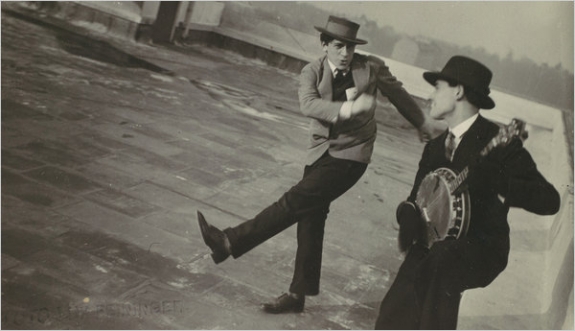T. Lux Feininger, a painter and photographer who, as a young student at the Bauhaus, used his camera to compile an invaluable and visually distinctive record of the artistic avant-garde in Germany between the wars, died last Thursday at his home in Cambridge, Mass. He was 101.
The death was confirmed by his daughter-in-law Kate Feininger.
Mr. Feininger was the younger brother of the photographer Andreas Feininger. His father was the painter Lyonel Feininger, one of the first artists appointed by Walter Gropius to teach at the Bauhaus in Weimar.
At 16 he became a student at the Bauhaus, which had moved to Dessau. There he collaborated in Oskar Schlemmer’s experimental theater, played in the Bauhaus jazz band, and studied painting with Josef Albers, Paul Klee and Wassily Kandinsky.
Above all, he took photographs. The Bauhaus did not have a photographic studio until 1929, but Mr. Feininger, who had begun taking photographs several years earlier with his grandmother’s box camera before graduating to his own 9-by-12-centimeter plate camera, played the role of artistic photojournalist.
Influenced by the New Vision principles articulated by the Bauhaus teacher Laszlo Moholy-Nagy, Mr. Feininger chronicled daily life at the Bauhaus in images that showed a playful, spontaneous spirit and a keen sense of new formal developments in photography.
“He captured what the student life was like there in a sophisticated, innovative way, even though he was totally untrained,” said Laura Muir, assistant curator of the Busch-Reisinger Museum at Harvard. “He merged photojournalism with the New Vision aesthetic of exaggerated angles, extreme close-ups and cropping.”
Theodore Lux Feininger was born on June 11, 1910, in Berlin. While at the Bauhaus, he sold his photographs to picture newspapers and periodicals through the Berlin photo agency Dephot. In 1929 his work was included in Film und Foto, a groundbreaking survey of modern photography in Stuttgart.
After he turned to painting that same year, he exhibited widely in Germany under the name Theodore Lux before emigrating to the United States in 1936. He left most of his photographic negatives in Germany, where they disappeared.



